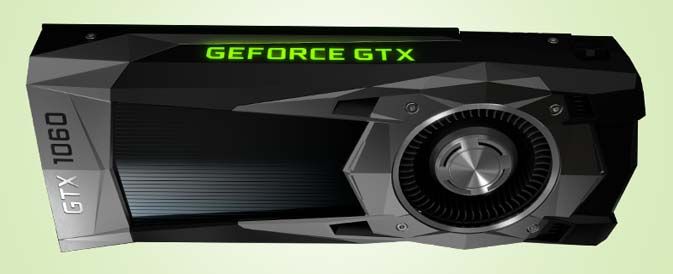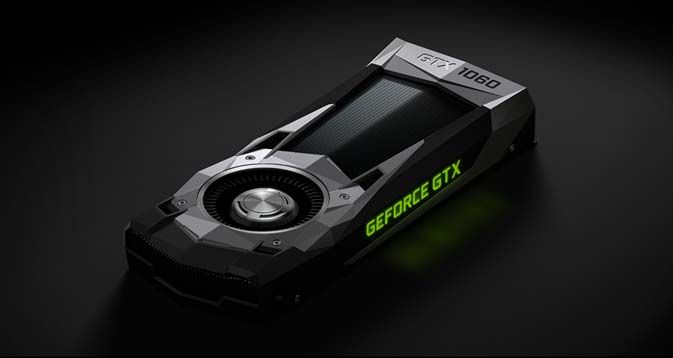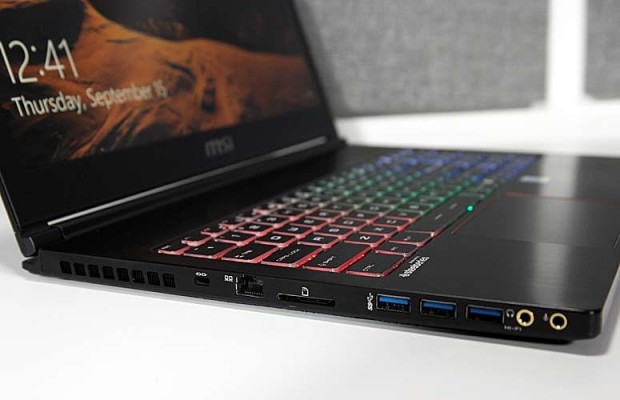Nvidia GTX 1050 vs GTX 1050 Ti vs GTX 1060: What's the Best Value?
The Nvidia GeForce GTX 10-Series of GPUs for laptops marks a departure from the scaled-down GPUs in Nvidia's prior mobile series. Thanks to the latest generation of GPUs under the Pascal code name, laptop GPUs can rival those of their desktop counterparts. This means it's never been a better time to get into laptop gaming.
If you don't want to blow several months' rent on something like this GTX 1080 beast machine, consider consider a laptop with Nvidia's entry-level 10-Series GPUs: the GTX 1050, GTX 1050 Ti and GTX 1060.
How do they differ, what does that mean for performance and what can you expect to pay for each of these laptops? Well, let's get into it. You've got a laptop to buy.
Specs compared
The GTX 1050 and GTX 1050 Ti GPUs share many key specs, such as maximum video memory (VRAM), memory speed and memory bandwidth. They also share support for technology such as Nvidia Ansel and G-Sync, and neither supports VR or SLI. The key differences come down to clock speeds and CUDA cores. Higher clock speeds and more cores translate into a more capable GPU that can do more work, more quickly. The GTX 1050 has a clock speed of1,354 MHz and 640 CUDA cores, and the Ti has a clock speed of 1,493 MHz and 768 cores. For a full breakdown of the differences between the mobile-series GTX 1050 and GTX 1050 Ti, check out our head-to-head comparison.
That leaves just the GTX 1060, and you get a lot for the extra money. The GTX 1060 is VR-ready, so it works with Oculus Rift and HTC Vive headsets. In contrast, the GTX 1050 and 1050 Ti do not. The 1060 doubles the number of CUDA cores from the GTX 1050's 640 to 1,280. Compared with the 1050 Ti's 1,620 MHz, the 1060 has a lower base clock speed of 1,403 MHz but a slightly higher boosted speed of 1,670 MHz.
So what does all that mean? The jump in cores for the 1060 means it has a much higher workload capacity than either the 1050 or the 1050 Ti, even though they have similar speeds. The final big departure is with VRAM, with the 1060 sporting a max of 6GB. VRAM is crucial for giving your GPU the legroom it needs to use its processing power. Both the 1050 and the 1050 Ti top out at 4GB, which is still enough to run AAA titles comfortably. However, it won't be long before that is the minimum the latest games will need to run. The GTX 1060 offers more longevity in this regard.
Performance
The GTX 1050 and 1050 Ti compare as you might imagine, with the more expensive card edging out the base model. Our comparison of two Asus ROG Strix GL553 laptops showed that frame rates were as much as 9 fps higher in the Ti model while running Hitman on Ultra settings on both systems.
Sign up to receive The Snapshot, a free special dispatch from Laptop Mag, in your inbox.
It wasn't always enough to lift the budget cards up over 30 fps when testing every game, but even when the GTX 1050 can run a game comfortably, the 1050 Ti can do so at a smoother frame rate. Just don't expect the GTX 1050 Ti to offer a huge leap forward; it's more of a budget-friendly stop-gap for people who don't want to make the jump to the 1060.
| Row 0 - Cell 0 | GTX 1050 | GTX 1050Ti | GTX 1060 |
| GTA V (fps) | 23 | 27 | 48 |
| Hitman (fps) | 30 | 39 | 58 |
| Metro Last Light (fps) | 23 | 28 | 45 |
When we ran the 3DMark Fire Strike benchmark to test graphical performance, the GTX 1050-equipped Asus ROG Strix GL553VD scored 6,192, which is above the category average of 4,658. To compare that with a GTX 1060 laptop, the MSI GS53VR 6RF Stealth Pro shot way past that score, earning 9,636.
And although the MSI laptop has a slower Intel Core i7-6700 processor, it still posted a much higher average frame rate when running GTA V at 1080p on Very High settings. The GTX 1050 with the faster CPU came in at a barely playable 23 frames per second, below the ideal minimum of 30 fps. But the GTX 1060 laptop with the slower CPU more than doubled the performance with an average of 48 fps, showing that a good GPU can go a long way.
These entry-level GPUs don't manage to get to the coveted 60 fps everyone strives for, but it's pretty impressive for the GTX 1060 to get close to that number on High settings while still being offered in systems costing less than $2,000.
Which GPU offers the best value?
To get a clear picture of what these GPUs add to the cost of your laptop, let's look at three systems with otherwise comparable specs. The following three MSI laptops sport Intel Core i7-7700 CPUs, as well as similar screen sizes and system memory.
The GTX 1050-powered MSI GL72 7RD-028's price of $1,169 is decent for an entry-level laptop. (You can go lower if you opt for a slower CPU.)
MORE: Which GPU is Right For You
Moving up to the GTX 1050 Ti raises the price by less than $100 for this MSI GL62M 7REX-1409. For an extra 80 bucks, you get gains close to 10 fps over the base model GTX 1050.
Lastly, the MSI GS Series GS63VR Stealth Pro-230 with a GTX 1060 GPU costs $1,799. With very capable benchmark numbers and VR support, the GTX 1060 gives you a lot for the extra $600. Whereas the 1050-equipped laptops will run into problems while processing the flashier effects of new games in a few years, the GTX 1060 should stay viable a lot longer thanks to its greater VRAM.
So, which do I choose?
Even if you're on a tight budget, I'd still recommend stretching for GTX 1050 Ti over the base 1050 because it offers a noticeable performance boost for just $80. You can make your money back by buying a couple of games on a Steam sale instead of at full price.
But overall, I recommend the GTX 1060 for anyone interested in entry-level laptop gaming. It offers a significant performance boost, VR support and far greater longevity thanks to greater onboard memory, all for a relatively low cost The GTX 1060 costs more than the other options, but you get more for your money.
Laptop Guide
- Laptop Buying Guide: 8 Essential Tips
- The Best & Worst Laptop Brands
- Laptop Tech Support Showdown: Undercover Report
- Should I Buy a Chromebook? Buying Guide and Advice
- Laptops with the Longest Battery Life
- Chromebooks vs. Windows 10 Laptops: What Should You Buy?
- Why You Shouldn't Buy a Touch-Screen Laptop
- Out of the Box Tips: Set Up Your New Laptop Like a Pro
- The Best Time to Buy a Laptop
- Chromebook vs. Tablet: Which Should You Buy?
- Laptop Buying Tips for Students
- 10 Key Features to Look for in Your Laptop
- How to Buy a 2-in-1 Laptop Hybrid
- USB Type-C FAQ: Everything You Need to Know
- How to Get Rid of Your Old Laptop
- Laptop Warranties: What They Cover
- Which CPU is Right For You?
- Which Laptop Features Are Worth the Money?
- Gaming Laptop Buying Guide: Find the Right Rig
- 10 Reasons Why Consumers Should Buy Business Laptops
- Which MacBook is Right for You?
- 5 Things to Look For in Your Next Laptop Keyboard
- How to Configure Your Laptop: Specs That Matter
- Which Graphics Card Do You Need?
- The Perfect Laptop? Here’s What It Should Have
- Why 78 Percent of Laptop Screens Suck
- A Guide to Computer Ports and Adapters
- 13 Ways to Make a Slow Laptop Faster
- How to Tell If You Can Upgrade Your Laptop
- Laptop Locks Guide: Do You Need One?
- 10 Features You Can Skip to Save Money





